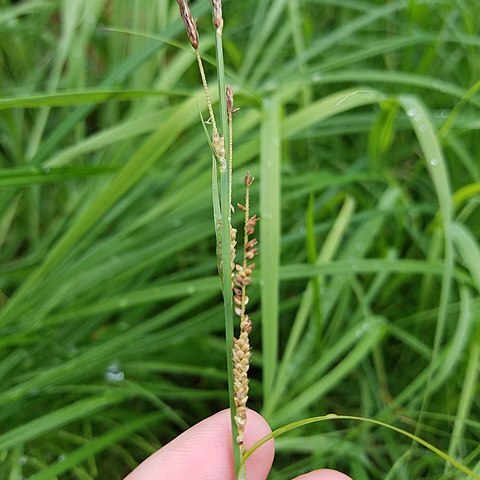Plants not cespitose. Culms acutely or obtusely angled, 30–115 cm, scabrous. Leaves: basal sheaths red-brown; sheaths of proximal leaves glabrous, fronts lacking spots and veins, apex convex, prolonged; blades 3–6 mm wide. Inflorescences: proximal bract equal to inflorescence, 3–5 mm wide. Spikes erect; proximal 3–5 spikes pistillate, 2.5–10 cm × 3–5 mm, base attenuate; terminal 2–3 spikes staminate. Pistillate scales pale or red-brown, equaling perigynia, apex acute, awnless. Perigynia ascending, green, spots absent, 3–5-veined on each face, somewhat flattened, loosely enclosing achenes, ellipsoid, 1.7–3.2 × 1–2.1 mm, dull, apex rounded or obtuse, papillose; beak 0.1–0.3 mm. Achenes not constricted, dull. 2n = 72.


